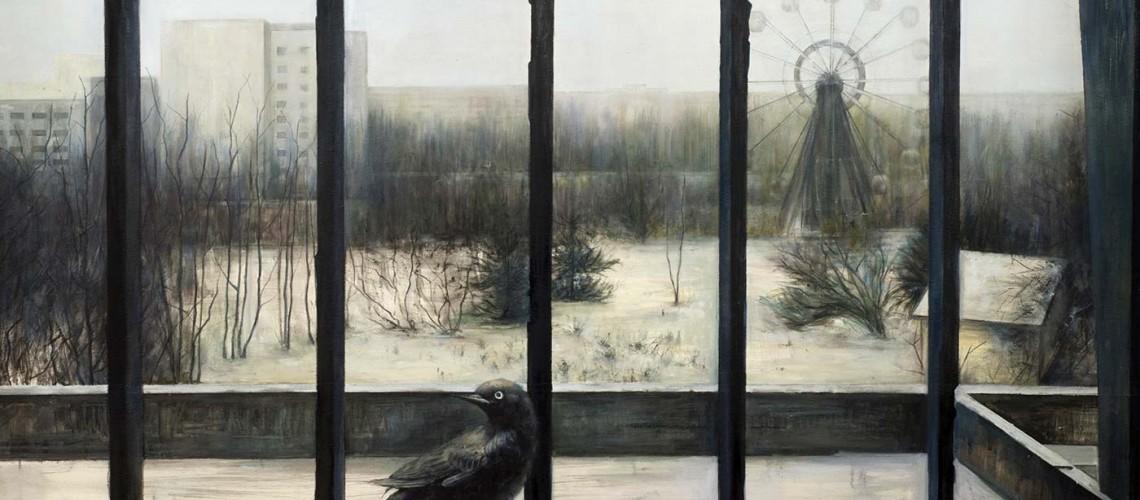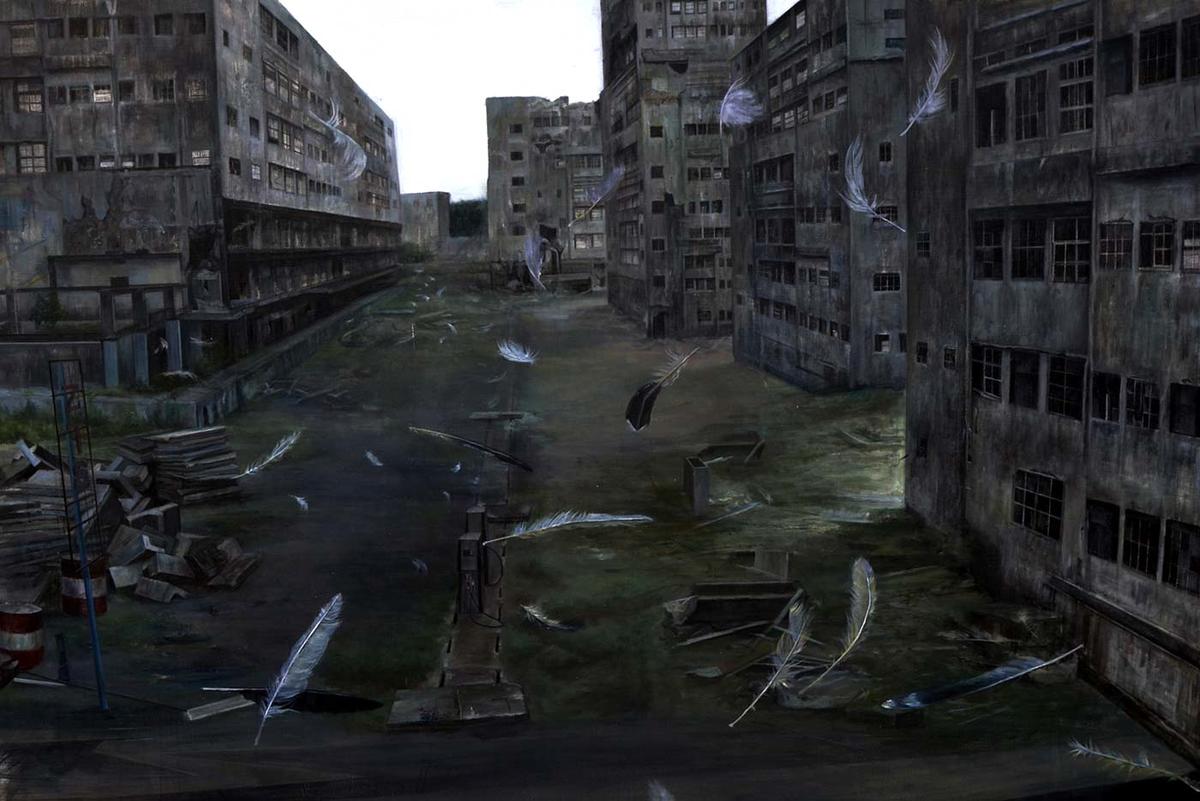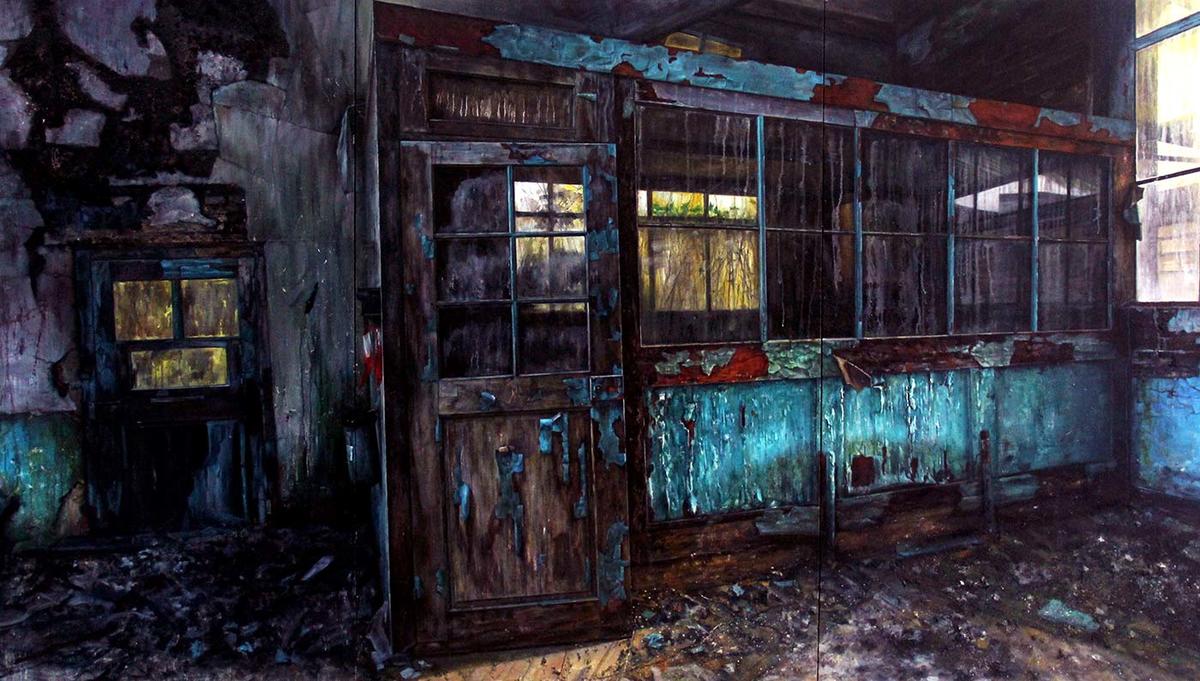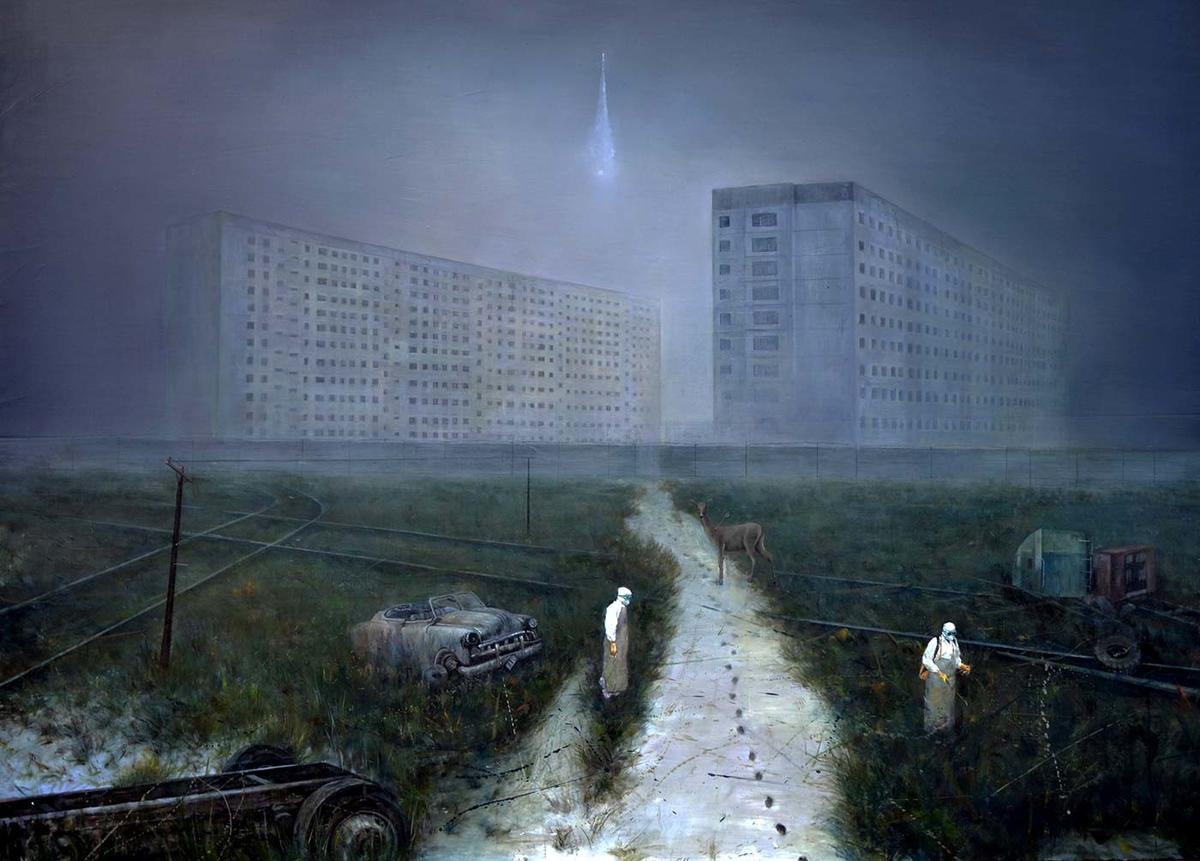1990s Artist Chases Super Realism

1990s Artist Chases Super Realism
LYNNE WANG FEBRUARY 27, 2015 0
Zhao Tianshun never enjoyed the advantages of his artistic peers. Denied access to a paintbrush until he was 16, the artist’s early life appeared to be fated for struggle and hardship in a State-owned factory.
Born in Wuhan, Hubei province in 1991, Zhao grew up in a working class family with few connections to the artistic world. But that changed in 2007 when a distant uncle in Beijing invited him to spend some time in his studio by North Forth Ring Road.
“Seeing him being absorbed in creating in such a large space, I was totally enchanted. I started to fantasize about working an artist like him,” Zhao says.
After returning to Wuhan, Zhao enrolled in a pre-sessional course at the Hubei Institute of Fine Arts, Central China’s top art school. Without any painting experience or art education, Zhao spent two years catching up on the basic skills and knowledge that his peers had already mastered. He was admitted to the school in 2010 and graduated last June.
“I’ve known it’s hard to become a successful artist since before I stepped into the art world, but I love painting from the bottom of my heart,” he says.
Zhao’s works focus on his personal experiences in factories and danwei housing.
“The Second Opium War of the 1850s turned Wuhan into a city full of foreign concessions. Many of them are still standing today,” he says. “I live in Old Hankou, [a once prosperous treaty port city] with many old buildings that inspire me to create.”
Zhao’s Factory series shows off his obsession with mottled buildings that have been marked by history and time. Using hard silhouettes and geometric shapes, he exposes the delicate underlying structures of Chinese factories. Blue and purple give his paintings a silent and solemn tone with a weird sense of super-realism.
“I love super-realism. I love European science fiction films. The works of Salvador Dali, Rene Magritte and Tang Hui have significantly shaped my style,” Zhao says.
However, confusion over the future has dragged Zhao from his imaginative world into reality since graduating from Hubei Institute of Fine Arts last year.
“When I draw the first picture of the Factory series, my motives were pure. But during the six months since graduation, I’ve felt lost and depressed: especially after failing the postgraduate entrance exam for the Central Academy of Fine Arts (CAFA) earlier last year,” Zhao says.



The Wasteland series he created in this period is the best mirror for Zhao’s bewilderment. While dilapidated buildings remain the main theme of the work, odd elements such injured elks, floating feathers and medical staff in biochemical suits appear in the picture. The illusory and disordered scenes represent the young artist’s anxiety over his future.
Witnessing Zhao’s struggle, one of his friends persuaded him to paint something that would be more “welcomed” by the market compared to his houses and factories. Zhao took his advice and painted Paradise Lost, but it was a decision he would regret.
“I expected to just change the style and colors, but when I was drawing I felt miserable. I realized that this was not what I wanted to express through my brush. Although I finished it, it’s something I don’t want to show to others,” he says.
Zhao says he is determined to follow his heart and paint what he really wants to express. Some exhibitions have invited him to display his creations since the end of last year and two pictures from the Factory series were sold to private collectors.
This year, Zhao failed the entrance exam for CAFA’s master’s program for a second time. But even without the support of China’s top art school he remains confident he can realize his dreams.
“Uncertainty used to hurt, but now I just want to embrace it because it means endless possibilities,” Zhao says.
